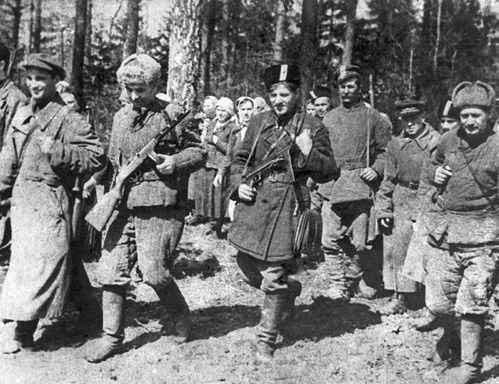Andy Ford – Warrington South CLP-member – tells the heroic but desperate story of the Soviet Partisans following the invasion of the Soviet Union by Germany in June 1941, ending the two-year-old Stalin-Hitler pact. This part deals with 1941 to early 1943.
From small beginnings, the Soviet partisans – guerrilla fighters in the German-occupied areas of the Soviet Union – grew into a mass armed movement which tied down thousands of German troops. According to a US Army study, it was “the greatest irregular resistance movement in the history of warfare”.
By 1943, more German soldiers were engaged against the partisans in Russia than were deployed in the whole of the Afrika Corps. It was a brutal struggle with no mercy shown by either side and with thousands of civilians lost to Nazi retribution. But in the end, the partisans prevailed and in fact were a crucial part of the eventual Soviet victory.
Stalin’s fear of his own people
After 1939 it was more or less forbidden to discuss partisan war as Stalin had decided Hitler would not attack the USSR. Also, the Red Army’s main expert on partisan warfare, Marshall Mikhail Tukhachevsky, had been brutally murdered by Stalin’s NKVD in 1937. As a result, following the German invasion of the Soviet Union in June 1941, everything Tukhachevsky had written, based on his experiences in Siberia in the civil war, had to be relearnt, re-equipped and reapplied at tremendous human cost.
In May 1942 the Soviet partisans were placed under the command of the Soviet High Command, the STAVKA, but prior to this, they had been controlled through the NKVD secret police. The last thing a dictator like Stalin wanted was an organised and armed population and so if he had to have a partisan movement, he wanted it firmly under his control.
Before May 1942 the partisan struggle was a mixture of un-coordinated actions by a few guerrilla detachments, random actions by Soviet soldiers who had evaded capture in the huge encirclements of 1941 by fleeing to the forests, and sabotage actions by NKVD detachments infiltrated into the occupied areas.
These last were quite often given away by the local population who had no love for the NKVD, especially when they came on missions to burn their houses and destroy crops. The NKVD operations were headed by the notorious NKVD executioner, Lev Mekhlis, later famous (or infamous) for losing the Crimea to a smaller force of invading Germans.
Nazi brutality
Once freed from the dead hands of the secret police, the partisans began to function as a proper military force coordinating with the Red Army and their effectiveness increased many times over. But as well as benefiting from the possession of radio sets, machine guns and ammunition, the partisans also grew because of the brutality of the occupying Wehrmacht and their auxiliaries in the rear areas.
In 1941 Germany took thousands of tonnes of grain from Russia and Ukraine to try and make good the 600,000 tonnes Stalin would have supplied under the 1939 pact. In the Baltics 15,000 men were sent to Germany as labourers and in Minsk, round ups of forced labourers began, enforced by executions. Of course, this met with resistance and at the end of July 1941, a decision was taken to enforce German rule with a maximum of force as they had so few troops to control thousands of square miles of territory and millions of people.
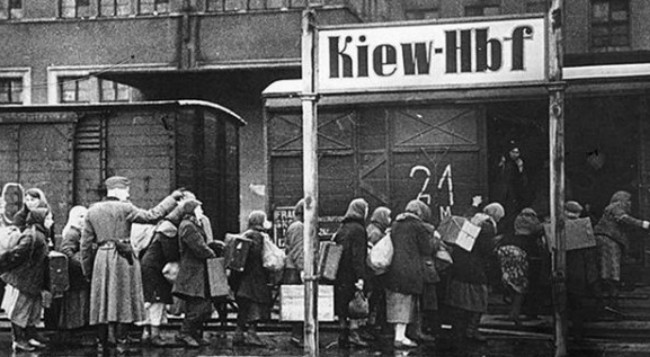
The Germans, who had been welcomed as liberators in some areas, began a vicious spiral of terror, resistance and reprisals. A stifled debate took place within the German high command, between those supporting all-out measures for supply of the army and racist ideology versus a strategy of building some level of support in the occupied areas. It was never fully resolved and the German occupation was characterised by mass executions, near-starvation and deportations, combined with occasional gestures towards minimal privileges for collaborators and appeals to rabid anti-Semitism.
The dark forces this could unleash were evident in the ‘Slutsk Affair’ of October 1941 when Lithuanian auxiliaries under SS command killed thousands of Jews over the course of three days with such brutality that even the Nazi governor of Belorussia, Wilhelm Kube (later assassinated by partisans), protested to Himmler at their brutality:
“The town was a picture of horror during the action. With indescribable brutality on the part of the German police officers and particularly the Lithuanian irregulars, the Jewish people, but also among them Belarussians, were taken out of their dwellings and herded together. Everywhere in the town shots were to be heard…”
There had been no plan to deal with partisan warfare but brutal measures were soon put in place – 50 random executions for every German soldier, and villages burnt simply for proximity to armed action. People began to flee to the forests where they linked up with Soviet soldiers evading capture.
Deadly Nazi plans for occupied Russia
The German Generalplan Ost explicitly put the food needs of the army first, non-combat troops next, followed by the German population back in Nazi Germany, and only then, the Russian civilians. In fact, rations were actually increased in Germany at this time, for propaganda reasons. The plan specifically ruled out feeding the Russian cities, envisioning millions of deaths of the ‘inferior’ Slav population.
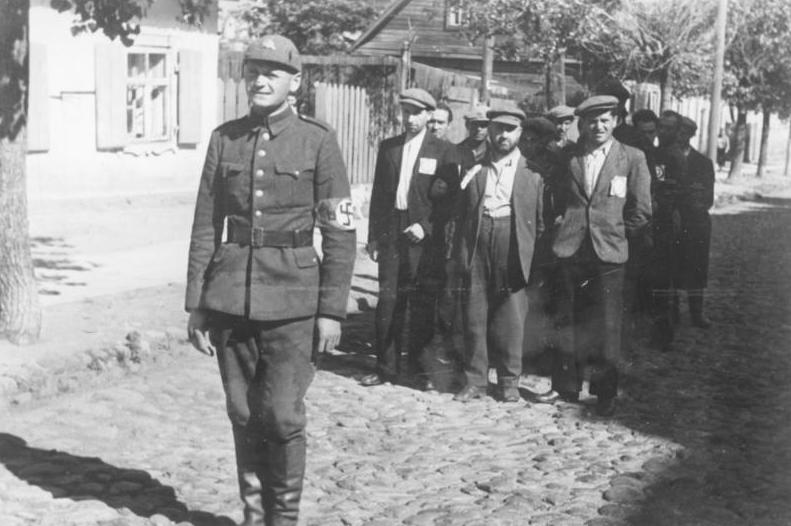
However, the German High Command found that their troops were unreliable in the face of civilian suffering and had to give orders forbidding German soldiers from sharing food. The high command eventually issued orders that the troops were to be kept as separate as possible from the civilian population and no longer assigned to food requisitions or reprisals.
This odious task was given instead to the SS, the Sicherheitsdienst (Security Division, SD), or increasingly, local auxiliaries, the Osttruppen. A tipping point was reached when, in December 1941, the Germans began occupying civilian houses, and also callously stripping civilians of their winter clothing. This was just as SS troops and SD battalions had to be rushed to the front to stem the tide after the debacle of the Battle of Moscow, leaving the rear areas almost unguarded and with mass resentment taking form. The occupiers began to be restricted to just the main roads, railway junctions and towns.
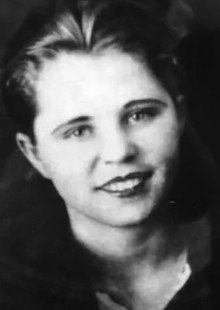
One German rear commander summed the situation up:
“As the Russians have become more active on the front, partisan activity has increased. The troops left to this command are just sufficient to protect the most important installations and, to a certain extent, the railroads and highways. For anti-partisan operations there are no longer any troops on hand. Therefore, it is expected that soon the partisans will join together into larger bands and carry out attacks on our guard posts. Their increased freedom of movement will also lead to partisans spreading terror among the people, who will be forced to stop supporting us and will then no longer carry out the orders of the military government authority.”
The emergence of the partisan war
When the Central HQ of Partisan War was created in May 1942 and integrated into the STAVKA, it took over a widespread low-level insurgency against the Nazis. The new command quickly systematised logistics, supply and armed operations and began to really cause the German occupiers serious problems. For example, they used the gap between the German Army Groups North and Centre around Vitebsk to infiltrate men, weapons and ammunition through a wilderness of swamps and forests to supply the partisans across north-east Belorussia.
This ‘Vitebsk Gate’ allowed the partisans to control up to 50% of Belorussia by 1943, and to engage in widespread sabotage and ambushes of German forces, to the point where German reinforcements for the Eastern front often sustained their first casualties up to 1,000 miles behind the front line. A German Corporal wrote home:
“So far, we have managed to reach Minsk. Our motor column had to make six stops owing to damaged bridges and four times we were stopped by enemy rifle and machine-gun fire. The stop between Slinim and Baranovichi was particularly long for we were ordered to repair a big bridge there, which had been destroyed by the guerrillas about two hours before our arrival. We hardly made 20 kilometres when we ran into heavy fire which was fearful indeed and this went on until we got out of the forest. As a result, four men were killed and three were wounded in our vehicle. After Minsk, our column split up and we went different ways. We proceeded on foot. We did not stop fighting these invisible men until we got to the front. In the proximity of Berezino we fought a real battle with them. As a result, our company lost 40 men.”
Stalin’s false policy on nationalism
In Ukraine the Soviets were less successful with just 30 detachments active in 1942. This was partly due to the terrain but mainly because of the atrocious attitude of the Stalinist regime to the National Question in Ukraine. Already in the 1930s Trotsky had pointed out that the Stalinist regime had lost any base of support in the country, which he described as a “Kremlin satrapy”.
Now the Stalinist insistence on a centralised Soviet Union under the domination of a Great Russian bureaucracy continued to alienate the local population, even in the face of Nazi atrocities, such as the round-up of one million Ukrainian men as forced labourers, or half a million Ukrainian girls taken to the German Reich as domestic servants. Without mass support, no guerrilla struggle can succeed.
As a result, in the west of Ukraine much resistance was conducted by the nationalist Ukrainian Insurgent Army (UPA) who started off fighting both the Germans and the Soviets but later collapsed into de facto co-operation with the Nazis against the partisans. Likewise, in the Crimea the previous oppression of the Tatar population, and a refusal to countenance their national rights, meant that partisan operations there were fitful and without success.
A proper Leninist policy would have proclaimed the rights of all national minorities to the degree of autonomy desired by them, up to and including formal independence. On such principles, the partisan struggle would have assumed an even greater sweep and the Germans would have found their base of collaborators amongst the Baltic peoples, Ukrainians, Chechens and some other Muslim nationalities completely cut away.
Belorussia
The heartland of the partisan struggle was Belorussia and western Russia where through 1942 further partisan-controlled areas were created around Orel, Kursk, Novgorod and Smolensk with a combined population in the hundreds of thousands. They operated a parallel government, with schools, hospitals, newspapers and even a crude postal service for communication with Russia.
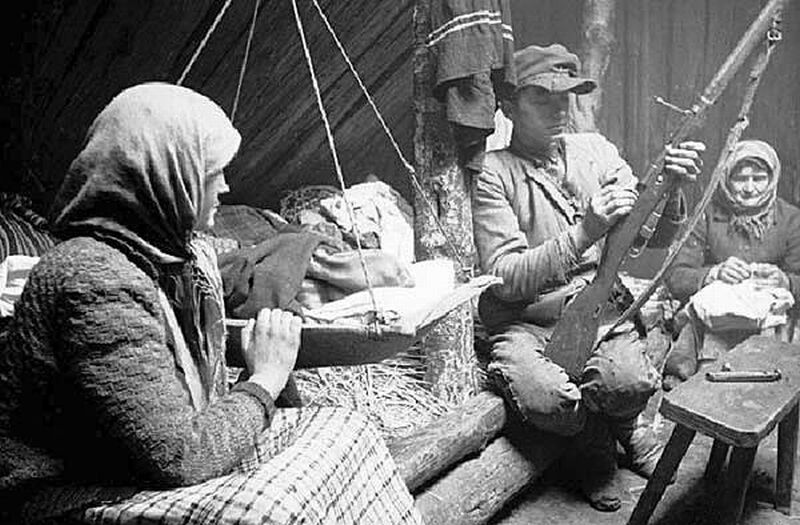
By 1943 about 10% of Nazi combat strength in the east, comprising 15 divisions and 144 police battalions, was deployed against partisan attacks. Even so they only had the numbers to guard key infrastructure and not to mount active attacks on the partisans, who by now numbered around 200,000 fighters.
Trotsky had actually predicted exactly such a scenario in 1940:
“In the defeated countries the position of the masses will immediately become worsened in the extreme. Added to social oppression is national oppression, the main burden of which is likewise borne by the workers. Of all the forms of dictatorship, the totalitarian dictatorship of a foreign conqueror is the most intolerable. At the same time, to the extent that the Nazis will try to utilize the natural resources and the industrial machinery of the nations defeated by them, the Nazis will themselves become inevitably dependent upon the native peasants and workers. Only after the victory do economic difficulties always begin. It is impossible to attach a soldier with a rifle to each Polish, Norwegian, Danish, Dutch, Belgian, French worker and peasant.” (We Do Not Change Our Course 1940)
Trotsky said this in 1940, when the collapse of France appeared to show Nazi invincibility and their future domination of Europe, and yet with a careful, sober analysis he could chart a way ahead.
One thing the occupiers could do was to conduct violent reprisals against the civilian population – 2.2 million Belarussians, one in four of the population, were either killed or deported. But this only drove people to support the partisans all the more. Basing their operations on local knowledge and intelligence from the population the partisans moved from defence in the swamps and forests to active attacks on bridges, railways and the smaller garrisons and guard posts. Often the railways were out of action for days on end creating a logistics nightmare for the already stretched Nazi supply routes.
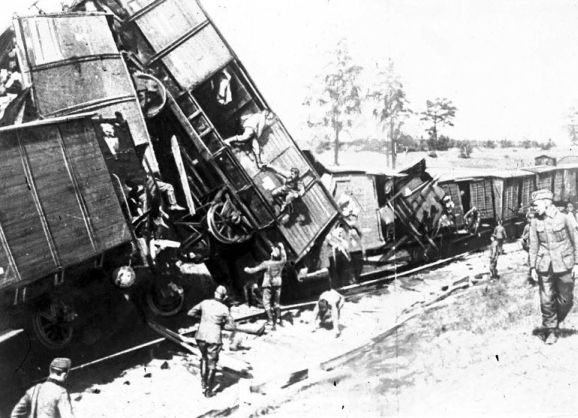
The classic partisan attack was to blow up a stretch of track in an isolated area, wait for the next train to derail and then machine gun the troop escort, blow up and burn the freight, and destroy the locomotive. One or two small explosive charges and 100 fighters could do immense damage, before fleeing back to the forests before the Germans could mobilise bigger forces. Even the repair crews needed armed guards (click here).
But the Belorussian partisans also mounted some big operations. One of the most famous was the September 1943 assassination of Wilhelm Kube, the Nazi governor of Belorussia. Despite his origins in the German Protestant Church in the 1920s Kube was a fanatical anti-Semite, who presided over atrocities across Belorussia including the murder of at least 55,000 Jewish men, women and children. On one occasion he mockingly threw sweets to a group of children being buried alive in a sandpit.
The Soviet high command ordered his death and after several close shaves he was eventually blown up in his own bed by a mine planted under the mattress by one of his Belorussian servants. Although it was a symbolic blow to Nazi prestige, 1,000 civilians were killed in revenge and the military effect is debateable.
A far more effective partisan operation was the destruction of Osipivichi railway junction on 22nd July 1943, where they managed to attach a mine to an ammunition wagon and detonate it right at the heart of the railway junction. Two ammunition trains and a fuel train were set alight, and exploded with devastating effect, destroying hundreds of railway wagons and a dozen Tiger tanks. Considering that at the Battle of Kursk the loss of Soviet tanks was about 8 or 9 for each Tiger destroyed, the military effect was considerable.
In economic terms the effect was perhaps greater. By 1943 partisan action had almost ended commercial extraction of peat, used for electricity generation across northern Russia, and this led to severe electricity rationing in the occupied cities. Timber cutting was also massively curtailed, and was restricted to the vicinity of garrisons and railways as the crews found it too risky to enter the forests. This affected the German capacity to repair bridges or construct defensive earthworks.
The policy of unlimited force and brutality was clearly not working and so from August 1942 the Wehrmacht decided to alter their policy, and it was Heinrich Himmler, of all people, who led the changes. It was decided that the civilian population should have ‘fair treatment’ (whatever that meant under the Nazis!) and better food rations. Reprisals were only to be conducted against ‘active supporters’ of the partisans, not those coerced into assistance, and partisan deserters were to be treated as POWs instead of being shot out of hand or publicly hanged.
But it was too little, too late. In any case the occupation administration continued with forced of labour deportations and food requisitions despite the new military policy. The Nazis had sown the wind, now they would reap the whirlwind.
[Look out for Part two – coming soon]

